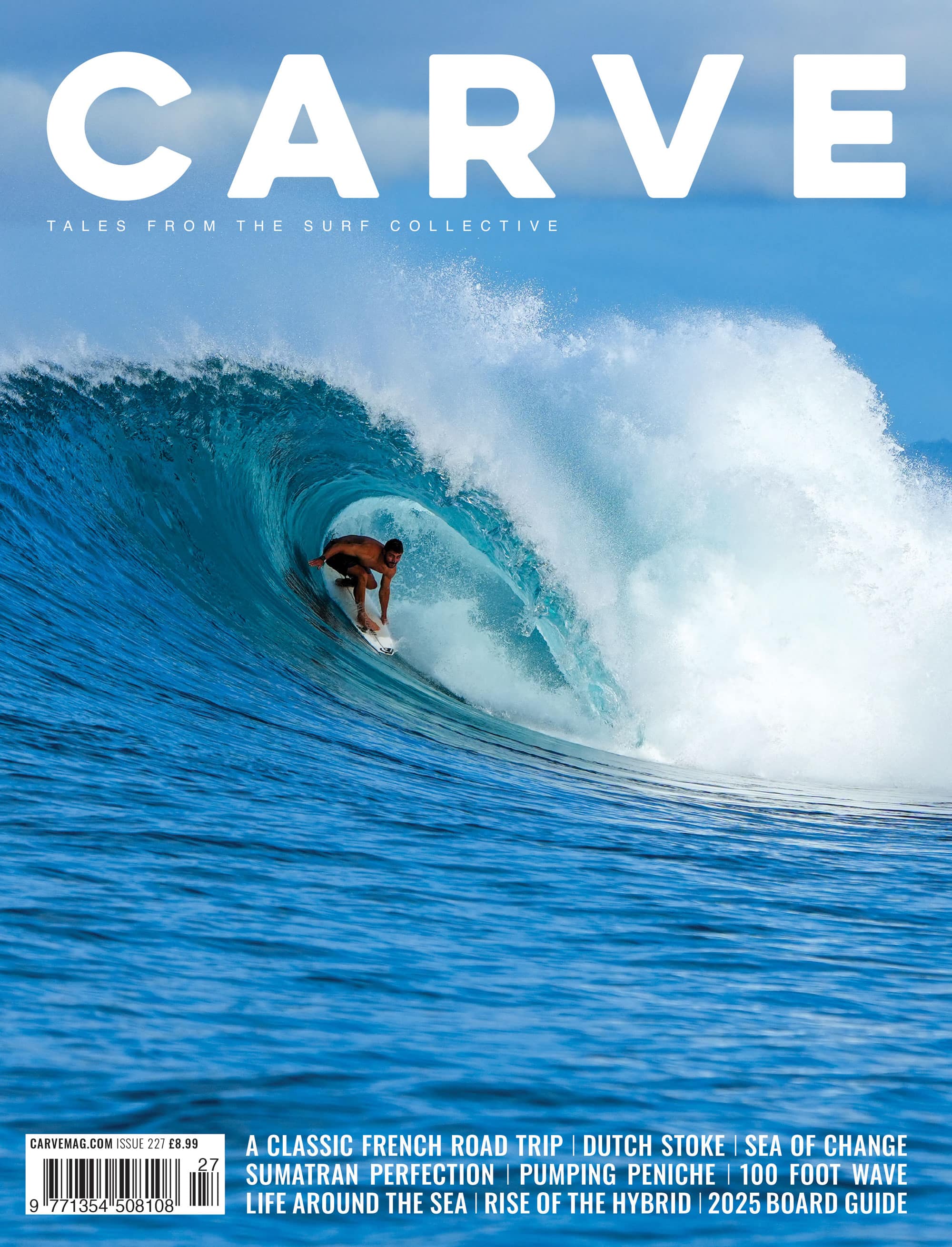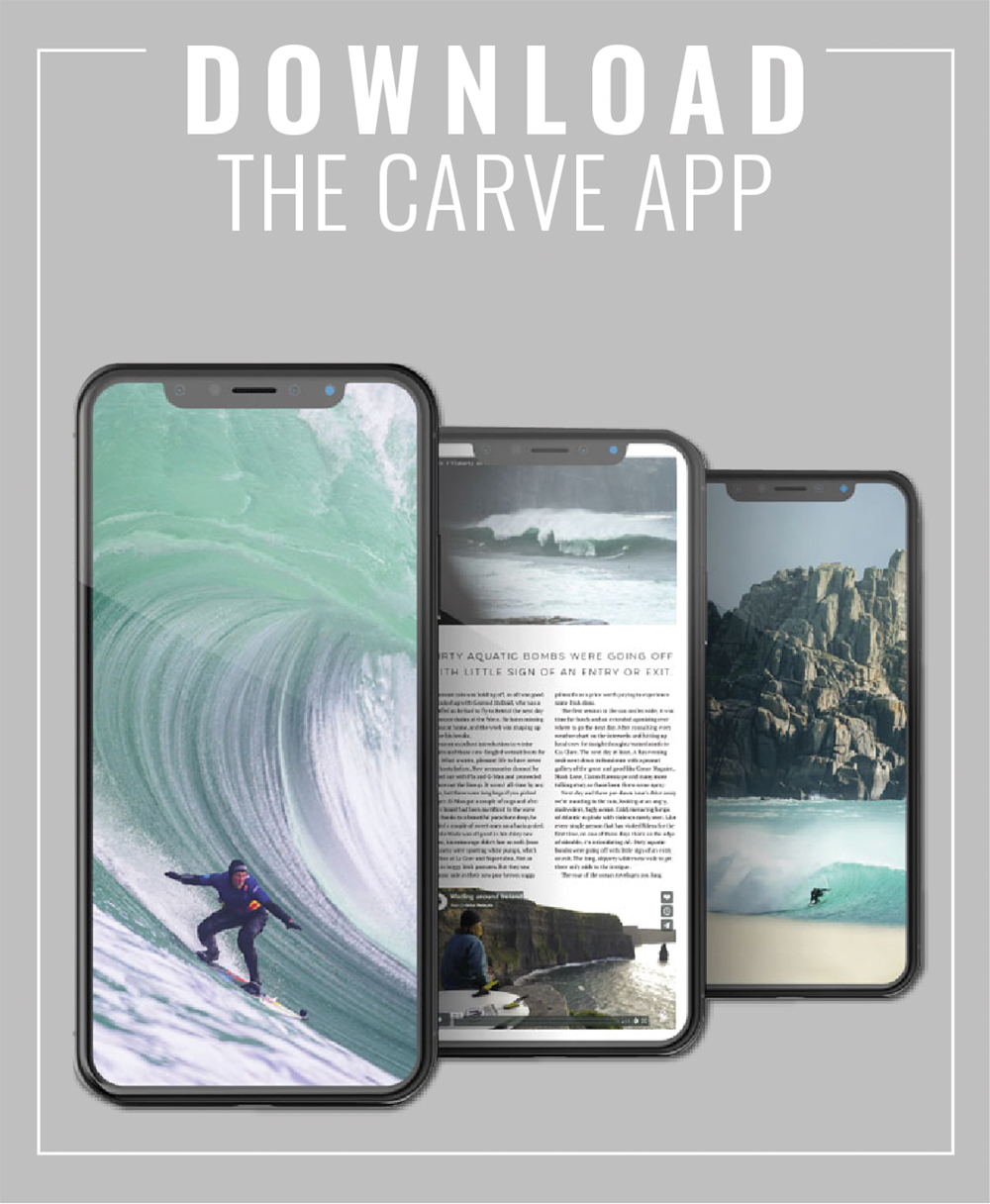The South Coast
The south coast might not be the most consistent area for surf in Britain but when there’s a swell pushing up the Channel it can turn it on.
Bournemouth
Outside of Bournemouth Kimmeridge Bay is the locals’ “jewel in the crown”. There are three breaks here, all of which only work on a southwest groundswell with no wind or gentle offshores. Broad Bench is one of the best waves on the south coast. It breaks over a granite reef and is very fast and powerful with A-frame peaks breaking in very shallow water — not for the inexperienced. The Ledges is a smaller, fun wave breaking at intervals from the beach on ridges of rock. Again shallow water and can get crowded in good conditions. The Bay is a slower wave, but still fun.
Boscombe Pier. On a high tide in pretty much any wind and with the right swell ‘Bossy’ goes off. It provides nice wedgy shorey peaks which can be heavy and hold their shape. Lefts and rights on most southerly swells. The Pier provides shelter from strong SW winds and can get crowded at weekends.
Bournemouth Pier works the same as Boscombe but with longer rides. Offshore winds can funnel through Bourne Valley for very hollow waves, but this is rare. Again, sheltered from gales but very crowded.
Southbourne most of the time is a mellow beginners to intermediate wave, but on a large swell it’s a notorious shore dump known to break boards and limbs! It works mainly on a southwest swell but easterly swells can produce long, clean rides. On a solid swell outside banks begin to work on an old sea wall 400m from shore. No shelter from SW gales and not for the faint hearted.
Highcliffe is a sandy beach break which produces long rides on a good southwest groundswell but blows out easily. Ideal for beginners except at high tide when backwash from cliffs can be exciting.
Isle of Wight
On the western side of the island Freshwater Bay works on a dropping tide on a big southwest swell with N winds. When there’s a swell pushing up the Channel the most popular beach break to head to is Compton which works on all states of the tide and Chiltern reef. If there’s a strong southwest or west swell and light northerlies then Niton at the southern tip of the island will be working, before or after high tide. Shanklin needs a massive southwest or east swell to work, best around three-quarters tide.
Wittering
Southwest facing stretch of sand-and-shingle beachbreak with numerous groynes. At East Wittering there are three beach breaks; Brackelsham Bay works at low tide, East Wittering is a mid tide break and West Wittering a high tide break. Needs a huge southwest or east swell plus northerly winds, they can also work on a wind swell. The state of the sea is O.K if it hasn’t rained for a while but if it does then West Wittering gets polluted.
Littlehampton
Wedgy peak next to the breakwater at the mouth of the River Arun. Faces south and works best around hight ide. Experienced surfers only.
Brighton
On a SW wind you’ll find Brighton pumping with a large number of surfers out, and bodyboarders charging the gnarly shore dumps. Brighton goes off when there is a big swell pushing up the Channel, with a SW or W wind, and as the wind turns NW it goes offshore.
Shoreham
Hot Pipes works on a southwest swell at mid tide — not for beginners as it’s pretty hairy. The Hot Pipe is a big water outlet covered in sharp barnacles, when a set comes in, it sucks up and produces a fast take off. This turns into a good hollow section or a closeout. It can get up to a solid 4 foot with a heavy end section.
The Arms is further west from the Hot Pipes. Because of its sandy bottom, it’s a good break for beginners.
The West Pier and Palace Pier work best at low to mid tide on a south west swell or SW or W wind but can work on a SE wind — the left hand side of Palace Pier is pretty mellow.
The Marina is a mid tide chalk reef break, which works well on a westerly on an incoming tide, but be careful here as there are underwater obstructions near the Marina wall.




